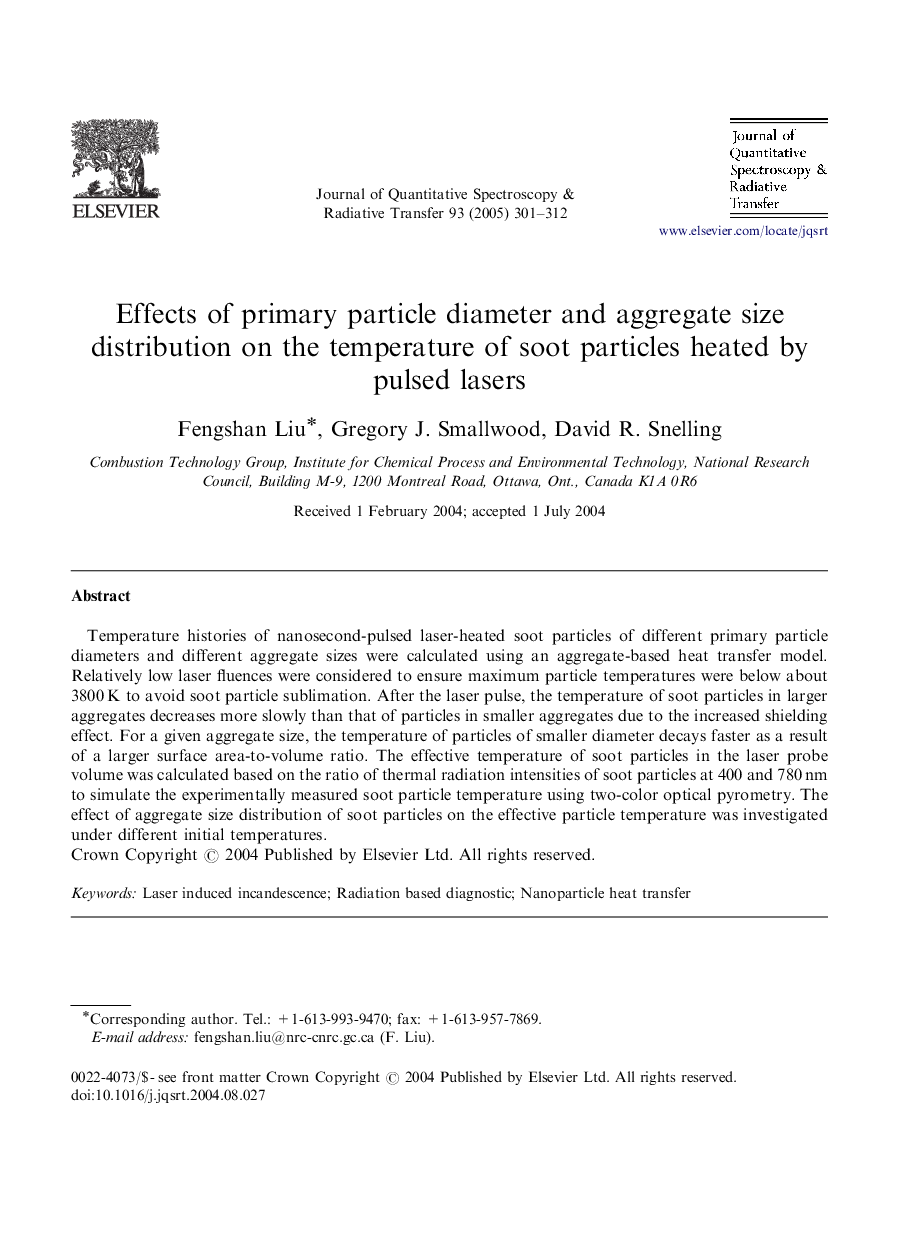| Article ID | Journal | Published Year | Pages | File Type |
|---|---|---|---|---|
| 9599166 | Journal of Quantitative Spectroscopy and Radiative Transfer | 2005 | 12 Pages |
Abstract
Temperature histories of nanosecond-pulsed laser-heated soot particles of different primary particle diameters and different aggregate sizes were calculated using an aggregate-based heat transfer model. Relatively low laser fluences were considered to ensure maximum particle temperatures were below about 3800Â K to avoid soot particle sublimation. After the laser pulse, the temperature of soot particles in larger aggregates decreases more slowly than that of particles in smaller aggregates due to the increased shielding effect. For a given aggregate size, the temperature of particles of smaller diameter decays faster as a result of a larger surface area-to-volume ratio. The effective temperature of soot particles in the laser probe volume was calculated based on the ratio of thermal radiation intensities of soot particles at 400 and 780Â nm to simulate the experimentally measured soot particle temperature using two-color optical pyrometry. The effect of aggregate size distribution of soot particles on the effective particle temperature was investigated under different initial temperatures.
Keywords
Related Topics
Physical Sciences and Engineering
Chemistry
Spectroscopy
Authors
Fengshan Liu, Gregory J. Smallwood, David R. Snelling,
